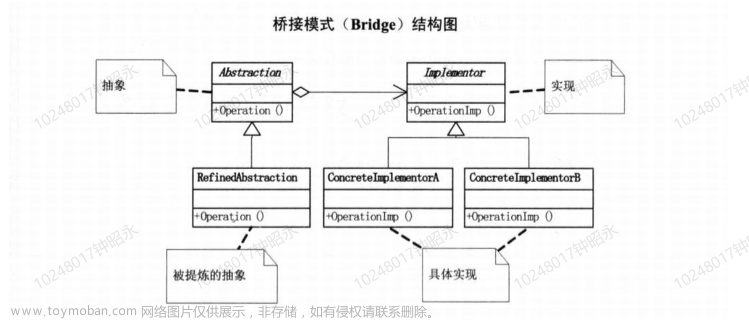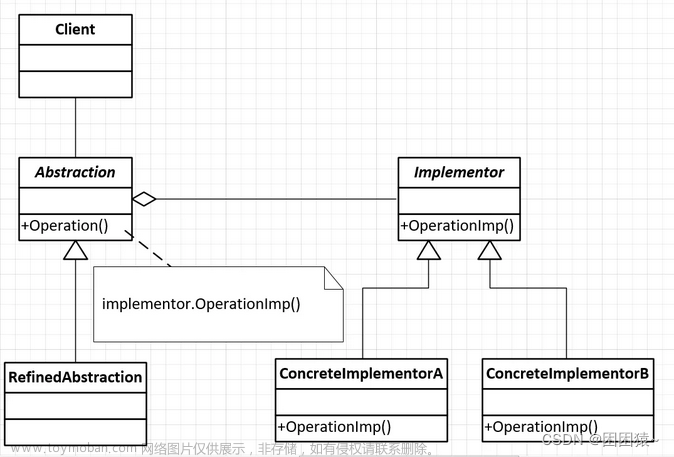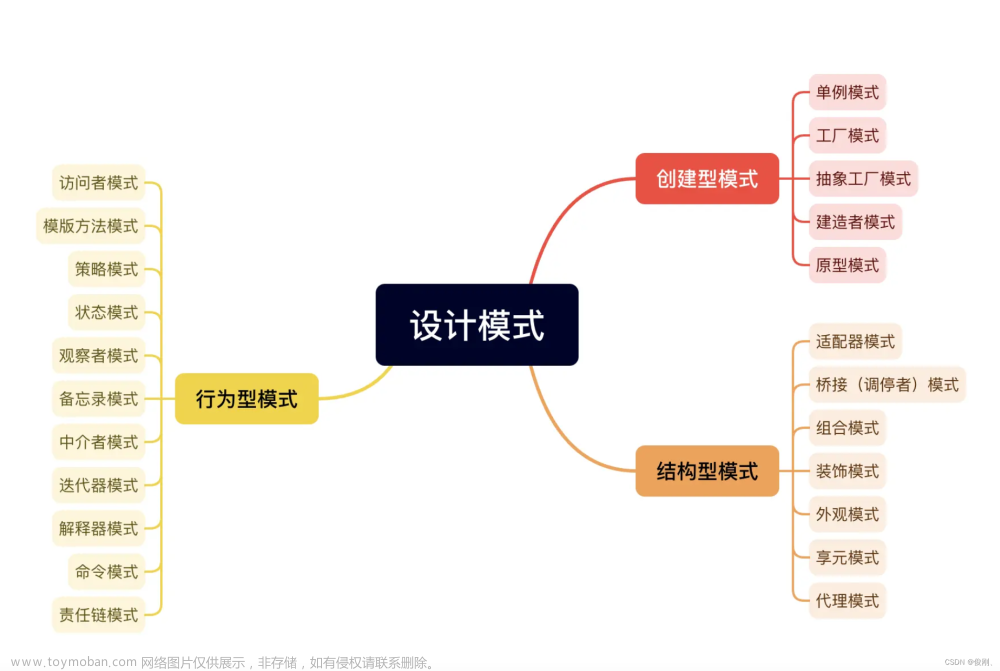目录
C++设计模式-桥接(Bridge)
一、意图
二、适用性
三、结构
四、参与者
五、代码
C++设计模式-桥接(Bridge)
一、意图
将抽象部分与它的实现部分分离,使它们都可以独立地变化。
二、适用性
- 你不希望在抽象和它的实现部分之间有一个固定的绑定关系。例如这种情况可能是因为,在程序运行时刻实现部分应可以被选择或者切换。
- 类的抽象以及它的实现都应该可以通过生成子类的方法加以扩充。这时Bridge模式使你可以对不同的抽象接口和实现部分进行组合,并分别对它们进行扩充。
- 对一个抽象的实现部分的修改应对客户不产生影响,即客户的代码不必重新编译。
- (C++)你想对客户完全隐藏抽象的实现部分。在C++中,类的表示在类接口中是可见的。
- 有许多类要生成。这样一种类层次结构说明你必须将一个对象分解成两个部分。Rumbaugh称这种类层次结构为“嵌套的普化”(nested generalizations )。
- 你想在多个对象间共享实现(可能使用引用计数),但同时要求客户并不知道这一点。一个简单的例子便是Coplien的String类[Cop92],在这个类中多个对象可以共享同一个字符串表示(S tringRep)。
三、结构

四、参与者
- Abstraction
定义抽象类的接口。
维护一个指向Implementor类型对象的指针。
- RefinedAbstraction
扩充由Abstraction定义的接口。
- Implementor
定义实现类的接口,该接口不一定要与Abstraction的接口完全一致;事实上这两个接口可以完全不同。一般来讲,Implementor接口仅提供基本操作,而Abstraction则定义了基本这些基本操作的较高层次的操作。
-
ConcreteImplementor文章来源:https://www.toymoban.com/news/detail-728368.html
实现了Implementor接口并定义它的具体实现。文章来源地址https://www.toymoban.com/news/detail-728368.html
五、代码
#include<iostream>
using namespace std;
class Implementor {
public:
virtual void OperationImp() = 0;
};
class ConcreteImplementorA : public Implementor {
public:
virtual void OperationImp() {
cout << "Concrete Implementor A" << endl;
}
};
class ConcreteImplementorB : public Implementor {
public:
virtual void OperationImp() {
cout << "Concrete Implementor B" << endl;
}
};
class Abstraction {
public:
virtual void Operation() = 0;
};
class RefinedAbstraction : public Abstraction {
public:
RefinedAbstraction(Implementor* TempImplementor) {
this->implementor = TempImplementor;
}
void Operation() {
implementor->OperationImp();
}
private:
Implementor* implementor;
};
int main() {
Implementor* implementorA = new ConcreteImplementorA;
Abstraction* abstractionA = new RefinedAbstraction(implementorA);
abstractionA->Operation();
Implementor* implementorB = new ConcreteImplementorB;
Abstraction* abstractionB = new RefinedAbstraction(implementorB);
abstractionB->Operation();
return 0;
}到了这里,关于C++设计模式-桥接(Bridge)的文章就介绍完了。如果您还想了解更多内容,请在右上角搜索TOY模板网以前的文章或继续浏览下面的相关文章,希望大家以后多多支持TOY模板网!











